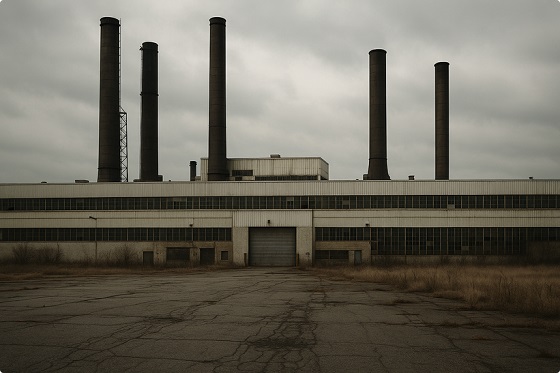Opinion
15:45, 40 Avenue crosswalk was a half-second and a half step from a disaster for a child
Tuesday June 20, 2017, approximately 3:45 pm, a crosswalk a half block from Eastview Middle School was a split second or half step away from a disaster.
Just north of the school zone, a student awaits to cross 40 Ave on the crosswalk. North bound city bus stops in the right hand lane. Oncoming southbound traffic stops and the student steps out and just as he gets to the second lane a truck goes roaring by in the passing lane. The student half ran and half flew back to the curb.
More vehicles flew by, the bus driver beeped his horn to warn the student, the driver leaned out the window and tried to slow traffic but only after several vehicles roared by before a vehicle stopped to let the young boy cross the road in a designated crosswalk.
The city has often times had a vehicle there doing the dreaded photo radar stint, and I can see why. These vehicles were doing more than 50 kmh just meters into the 50kmh zone in a crosswalk with children waiting to cross. It would be no contest who would lose between a small child trying to get home and a speeding truck or car.
What can the child do differently? Sprout wings? What can the drivers do? Slow down and think about your surroundings. A crosswalk, traffic is stopped, school zone, and pedestrians on the sidewalk may suggest something,
.Perhaps it is time to install lights at the crosswalk? Could we extend the 30 kmh zone past the crosswalk?
The problem is us, the drivers, we need to focus on our driving, not the clock or the destination, but on our driving. That child wanted to get home, perhaps he was hungry, had to use the facilities or even wanted to play a game or watch television, but he did not have tonnes of steel protecting him, or hundreds of horses helping him hurry. The drivers had the advantage and they used it.
The irony is that some of those drivers were parents picking up their children, worrying about their children’s safety. Probably rushing home to make dinner, before playing ball, or watching their favourite show. Being the danger that they try to protect their children from.
I do not think that the drivers were even aware of how close they came to injuring or killing a child. They probably just thought bus was stopped at a bus stop, the cars were stopped to drop off or pick up children.
If we can’t fix the drivers, can we install lights or do we need a footbridge to protect our children?
I do know that I will be glad to see that photo radar vehicle just north of Eastview Middle School next time.
International
The capital of capitalism elects a socialist mayor

New York City — the beating heart of American capitalism — has handed the keys to a socialist. Zohran Mamdani, a 34-year-old Democratic Socialist assemblyman from Queens, captured City Hall on Tuesday night, defeating former Governor Andrew Cuomo and Republican Curtis Sliwa in a bitterly fought three-way contest that upended the city’s political order. The Associated Press called the race less than an hour after polls closed, projecting Mamdani at 50.4% to Cuomo’s 41.3%, with Sliwa finishing a distant third at 7.5%. Mamdani, born in Uganda and raised on Manhattan’s Upper West Side, will become the city’s first Muslim and first openly socialist mayor.
Mamdani’s win marks a generational and ideological break from the city’s past, one that rattled Wall Street, alarmed business leaders, and divided Democrats. A proud member of the Democratic Socialists of America, Mamdani ran as a firebrand reformer promising to “tax the rich” and dismantle the influence of corporate money in city politics — proposals that critics said would cripple New York’s fragile economy. His campaign drew widespread scrutiny for his prior calls to “defund the police” and his harsh criticism of Israel, which led to accusations of antisemitism.
Cuomo’s attempt at a political resurrection fell flat. Despite spending more than $12 million on his independent campaign and receiving support from super PACs pouring in roughly $55 million, the former governor could not overcome the wave of progressive enthusiasm that propelled Mamdani from longshot to frontrunner. In a last-ditch effort to stave off defeat, Cuomo earned late backing from President Trump, outgoing Mayor Eric Adams and a handful of moderate Republicans, including Rep. Mike Lawler, who labeled him “the lesser of two evils.” Even that wasn’t enough.
The election itself was the city’s first serious three-way showdown in decades. Mamdani, Cuomo, and Sliwa clashed repeatedly over crime, affordability, and the future of policing. Cuomo leaned on his executive record and cast himself as a pragmatic problem solver, while Mamdani framed the race as a moral reckoning for a city that, in his words, “forgot who it’s supposed to serve.” His online following, slick digital outreach, and constant street presence helped galvanize younger voters, particularly in Brooklyn and Queens, where turnout surged. Meanwhile, Sliwa — the perennial GOP candidate — failed to broaden his appeal beyond his Guardian Angels base.
As he prepares to take office on January 1, 2026, Mamdani faces steep headwinds. His tax-and-spend agenda will require approval from state lawmakers and Governor Kathy Hochul, who has already rejected the idea of raising taxes. Still, Assembly Speaker Carl Heastie and Senate Majority Leader Andrea Stewart-Cousins have signaled they’ll work with him to advance portions of his sweeping platform. The victory, however, sends a message beyond policy: the city that built capitalism has now chosen a mayor who wants to dismantle it. Whether Zohran Mamdani’s socialist experiment reinvents or wrecks New York will soon be tested in the only arena that matters — reality.
Business
Capital Flight Signals No Confidence In Carney’s Agenda

From the Frontier Centre for Public Policy
By Jay Goldberg
Between bad trade calls and looming deficits, Canada is driving money out just when it needs it most
Canadians voted for relative continuity in April, but investors voted with their wallets, moving $124 billion out of the country.
According to the National Bank, Canadian investors purchased approximately $124 billion in American securities between February and July of this year. At the same time, foreign investment in Canada dropped sharply, leaving the country with a serious hole in its capital base.
As Warren Lovely of National Bank put it, “with non-resident investors aloof and Canadians adding foreign assets, the country has suffered a major capital drain”—one he called “unprecedented.”
Why is this happening?
One reason is trade. Canada adopted one of the most aggressive responses to U.S. President Donald Trump’s tariff agenda. Former prime minister Justin Trudeau imposed retaliatory tariffs on the United States and escalated tensions further by targeting goods covered under the Canada–United States–Mexico Agreement (CUSMA), something even the Trump administration avoided.
The result was punishing. Washington slapped a 35 per cent tariff on non-CUSMA Canadian goods, far higher than the 25 per cent rate applied to Mexico. That made Canadian exports less competitive and unattractive to U.S. consumers. The effects rippled through industries like autos, agriculture and steel, sectors that rely heavily on access to U.S. markets. Canadian producers suddenly found themselves priced out, and investors took note.
Recognizing the damage, Prime Minister Mark Carney rolled back all retaliatory tariffs on CUSMA-covered goods this summer in hopes of cooling tensions. Yet the 35 per cent tariff on non-CUSMA Canadian exports remains, among the highest the U.S. applies to any trading partner.
Investors saw the writing on the wall. They understood Trudeau’s strategy had soured relations with Trump and that, given Canada’s reliance on U.S. trade, the United States would inevitably come out on top. Parking capital in U.S. securities looked far safer than betting on Canada’s economy under a government playing a weak hand.
The trade story alone explains much of the exodus, but fiscal policy is another concern. Interim Parliamentary Budget Officer Jason Jacques recently called Ottawa’s approach “stupefying” and warned that Canada risks a 1990s-style fiscal crisis if spending isn’t brought under control. During the 1990s, ballooning deficits forced deep program cuts and painful tax hikes. Interest rates soared, Canada’s debt was downgraded and Ottawa nearly lost control of its finances. Investors are seeing warning signs that history could repeat itself.
After months of delay, Canadians finally saw a federal budget on Nov. 4. Jacques had already projected a deficit of $68.5 billion when he warned the outlook was “unsustainable.” National Bank now suggests the shortfall could exceed $100 billion. And that doesn’t include Carney’s campaign promises, such as higher defence spending, which could add tens of billions more.
Deficits of that scale matter. They can drive up borrowing costs, leave less room for social spending and undermine confidence in the country’s long-term fiscal stability. For investors managing pensions, RRSPs or business portfolios, Canada’s balance sheet now looks shaky compared to a U.S. economy offering both scale and relative stability.
Add in high taxes, heavy regulation and interprovincial trade barriers, and the picture grows bleaker. Despite decades of promises, barriers between provinces still make it difficult for Canadian businesses to trade freely within their own country. From differing trucking regulations to restrictions on alcohol distribution, these long-standing inefficiencies eat away at productivity. When combined with federal tax and regulatory burdens, the environment for growth becomes even more hostile.
The Carney government needs to take this unprecedented capital drain seriously. Investors are not acting on a whim. They are responding to structural problems—ill-advised trade actions, runaway federal spending and persistent barriers to growth—that Ottawa has yet to fix.
In the short term, that means striking a deal with Washington to lower tariffs and restore confidence that Canada can maintain stable access to U.S. markets. It also means resisting the urge to spend Canada into deeper deficits when warning lights are already flashing red. Over the long term, Ottawa must finally tackle high taxes, cut red tape and eliminate the bureaucratic obstacles that stand in the way of economic growth.
Capital has choices. Right now, it is voting with its feet, and with its dollars, and heading south. If Canada wants that capital to come home, the government will have to earn it back.
Jay Goldberg is a fellow with the Frontier Centre for Public Policy.
-

 Business2 days ago
Business2 days agoCarney government should retire misleading ‘G7’ talking point on economic growth
-

 Brownstone Institute1 day ago
Brownstone Institute1 day agoBizarre Decisions about Nicotine Pouches Lead to the Wrong Products on Shelves
-

 Alberta2 days ago
Alberta2 days agoCanada’s heavy oil finds new fans as global demand rises
-

 Censorship Industrial Complex2 days ago
Censorship Industrial Complex2 days agoPro-freedom group warns Liberal bill could secretly cut off Canadians’ internet access
-

 Bruce Dowbiggin2 days ago
Bruce Dowbiggin2 days agoA Story So Good Not Even The Elbows Up Crew Could Ruin It
-

 Daily Caller2 days ago
Daily Caller2 days agoNigeria Would Welcome US Intervention In Massacre Of Christians By Islamic Terror Groups
-

 Automotive2 days ago
Automotive2 days agoCanada’s EV experiment has FAILED
-

 Addictions2 days ago
Addictions2 days agoThe War on Commonsense Nicotine Regulation







